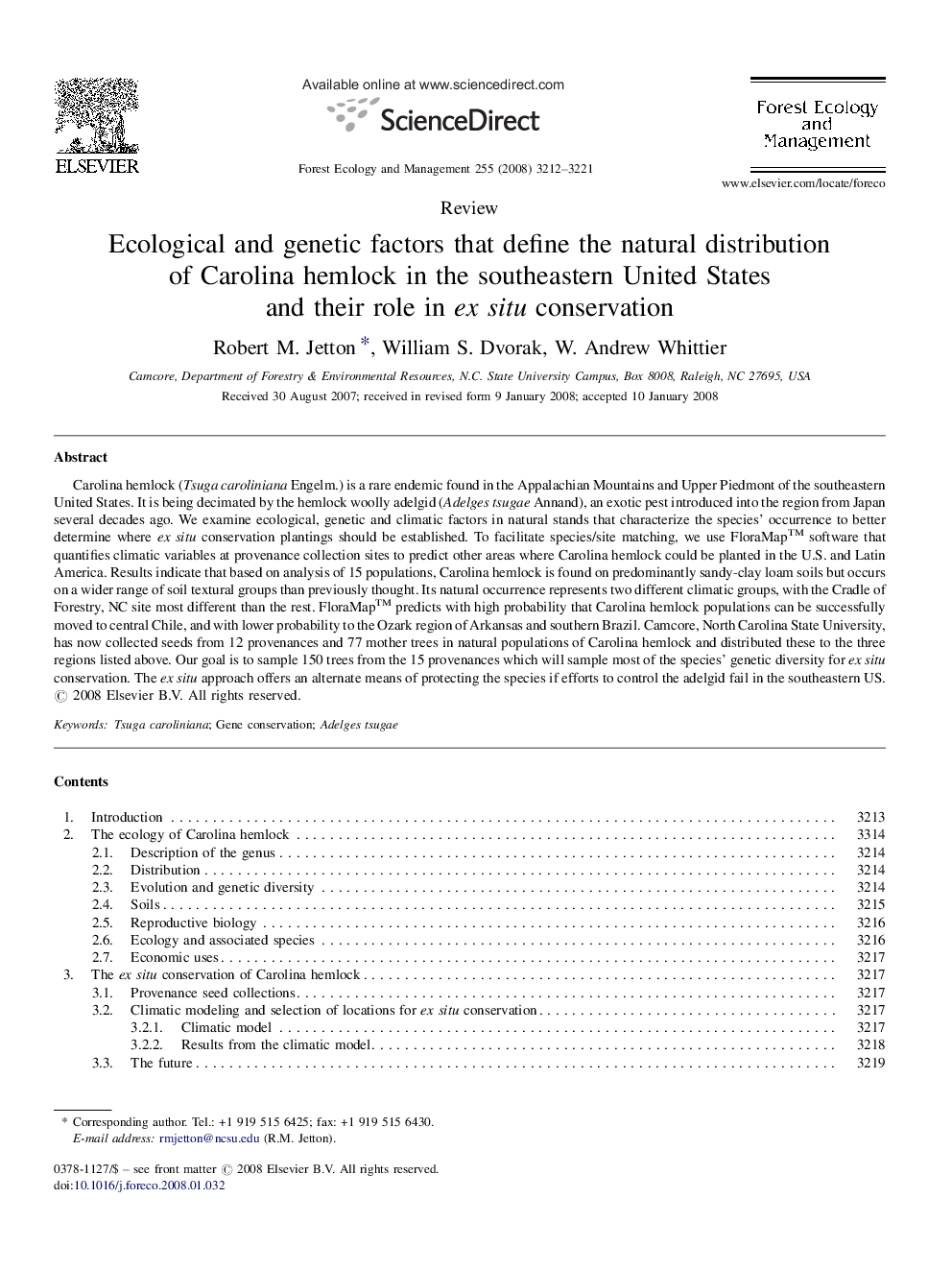| کد مقاله | کد نشریه | سال انتشار | مقاله انگلیسی | نسخه تمام متن |
|---|---|---|---|---|
| 89198 | 159335 | 2008 | 10 صفحه PDF | دانلود رایگان |

Carolina hemlock (Tsuga caroliniana Engelm.) is a rare endemic found in the Appalachian Mountains and Upper Piedmont of the southeastern United States. It is being decimated by the hemlock woolly adelgid (Adelges tsugae Annand), an exotic pest introduced into the region from Japan several decades ago. We examine ecological, genetic and climatic factors in natural stands that characterize the species’ occurrence to better determine where ex situ conservation plantings should be established. To facilitate species/site matching, we use FloraMap™ software that quantifies climatic variables at provenance collection sites to predict other areas where Carolina hemlock could be planted in the U.S. and Latin America. Results indicate that based on analysis of 15 populations, Carolina hemlock is found on predominantly sandy-clay loam soils but occurs on a wider range of soil textural groups than previously thought. Its natural occurrence represents two different climatic groups, with the Cradle of Forestry, NC site most different than the rest. FloraMap™ predicts with high probability that Carolina hemlock populations can be successfully moved to central Chile, and with lower probability to the Ozark region of Arkansas and southern Brazil. Camcore, North Carolina State University, has now collected seeds from 12 provenances and 77 mother trees in natural populations of Carolina hemlock and distributed these to the three regions listed above. Our goal is to sample 150 trees from the 15 provenances which will sample most of the species’ genetic diversity for ex situ conservation. The ex situ approach offers an alternate means of protecting the species if efforts to control the adelgid fail in the southeastern US.
Journal: Forest Ecology and Management - Volume 255, Issues 8–9, 15 May 2008, Pages 3212–3221